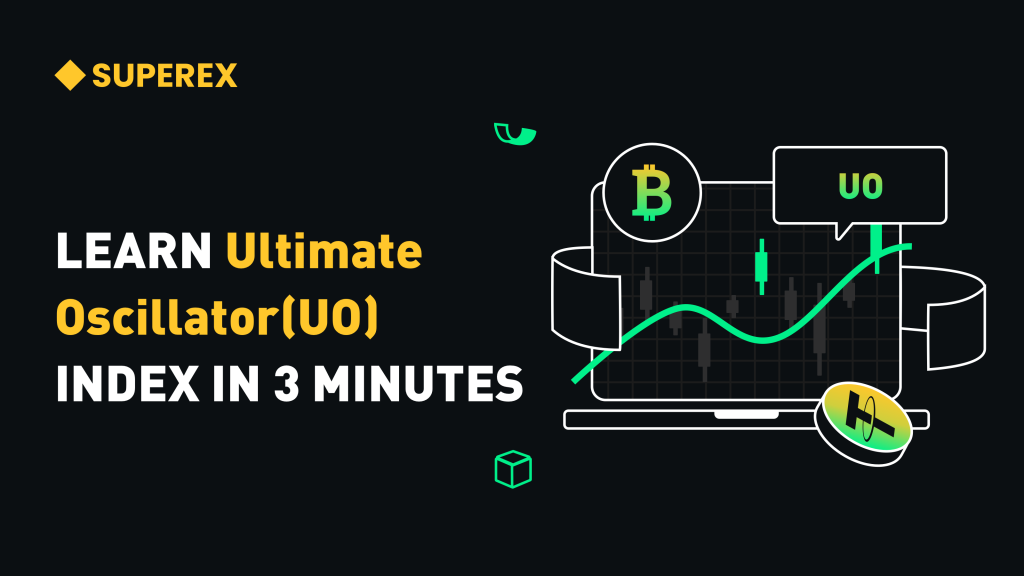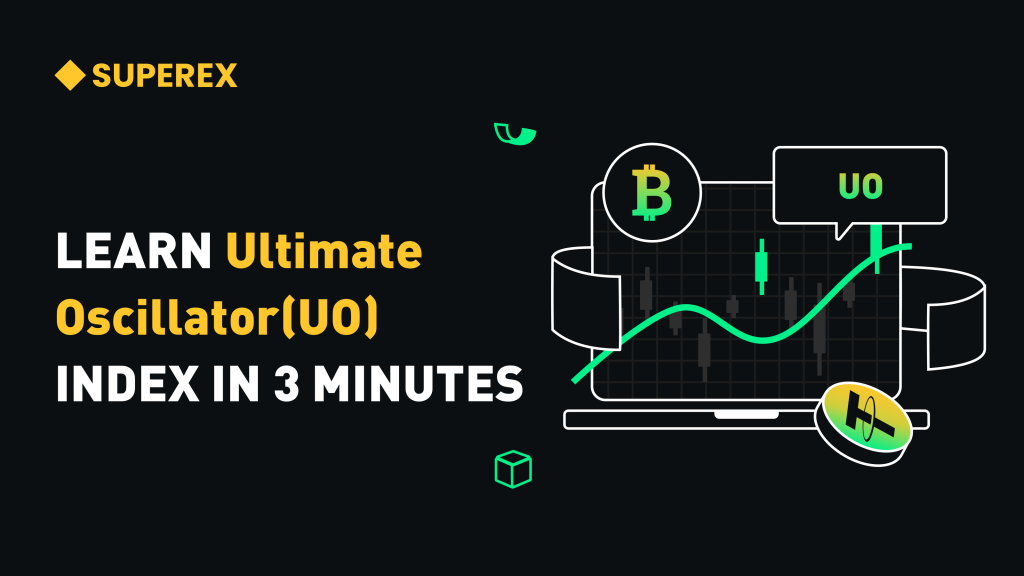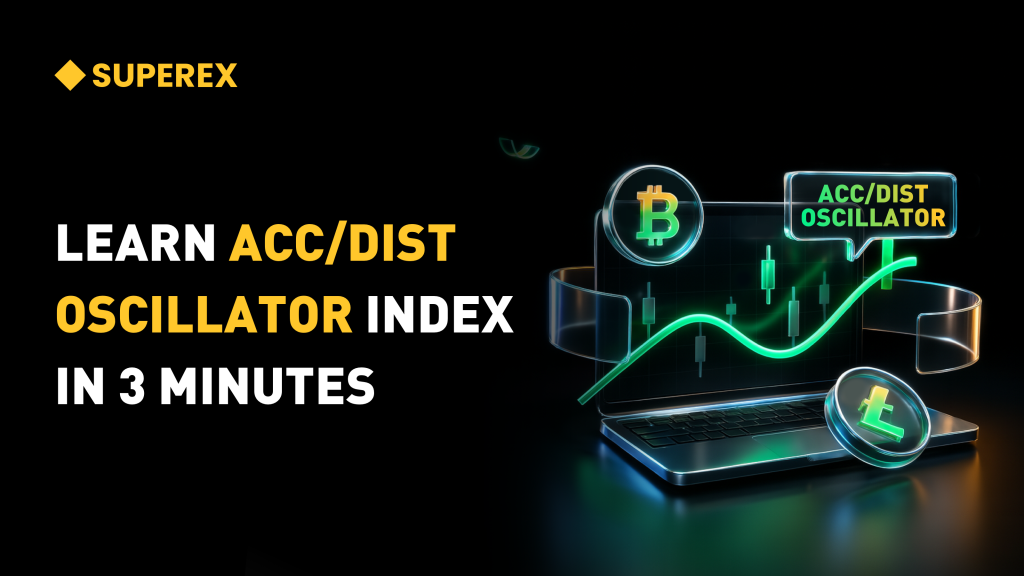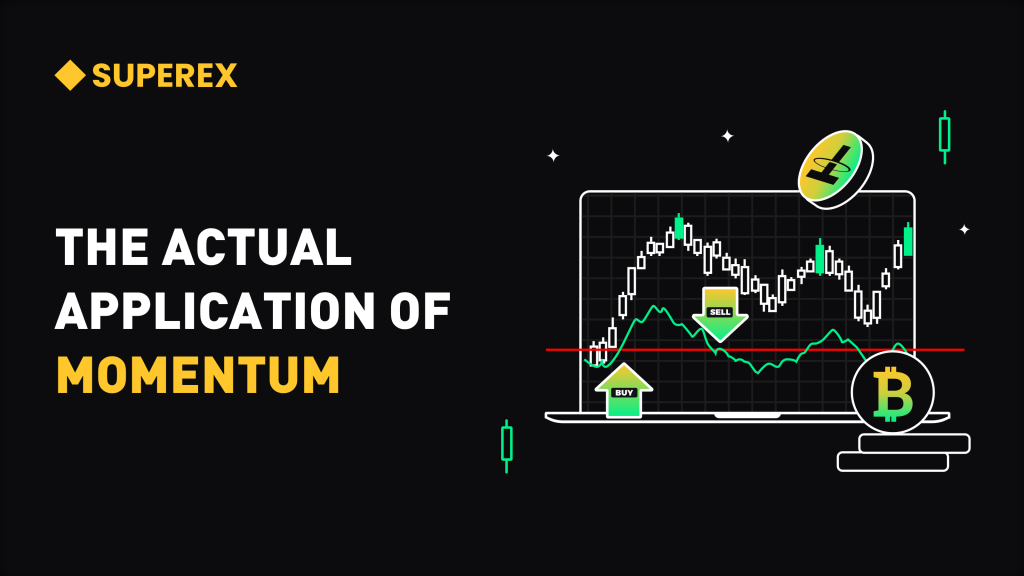LEARN ULTIMATE OSCILLATOR(UO) INDEX IN 3 MINUTES – BLOCKCHAIN 101

Ultimate Oscillator (UO) is a multi-period momentum oscillator that has gained popularity among traders with unique strategies due to its distinctive calculation method and its ability to balance short-term and medium-term market momentum. Proposed by renowned trader Larry Williams, the core concept of UO is to integrate data from three different periods—short, medium, and long—to reduce misjudgments and noise from a single timeframe, thus providing more reliable buy and sell signals.
This article will provide an in-depth analysis of the operational mechanism of this technical indicator from multiple perspectives, including its fundamental theory, calculation method, practical applications, advantages and disadvantages, and strategy examples. We will also explore how traders can use UO to capture trends and identify turning points in volatile markets.
- Click to register SuperEx
- Click to download the SuperEx APP
- Click to enter SuperEx CMC
- Click to enter SuperEx DAO Academy — Space

I. Basic Concept and Theoretical Foundation of UO
The Ultimate Oscillator is an oscillator that considers momentum data from multiple time periods. Its primary goal is to overcome the shortcomings of single-period indicators (such as RSI or Stochastic Oscillator), which often generate false signals under extreme market conditions. The theoretical foundation of UO is based on the assumption that market prices exhibit different momentum characteristics over different timeframes. Short-term movements may fluctuate sharply due to sudden events, whereas medium and long-term trends are generally more stable. By assigning different weights to short, medium, and long-term data, UO aims to smooth out these fluctuations and form a more comprehensive reflection of the market’s true momentum.
Specifically, the UO indicator measures market buying and selling strength by calculating the ratio of Buying Pressure to True Range. Buying Pressure is defined as the difference between the current price and the previous period’s low, while the True Range reflects the overall price fluctuation range. By taking a weighted average of Buying Pressure and True Range across three different timeframes, UO minimizes the impact of single-period noise, providing a more balanced and objective market assessment.
This multi-period approach allows UO to exhibit high sensitivity and stability when responding to sharp market fluctuations and rapid reversals. Traders can use UO values to identify overbought and oversold signals, helping them determine whether the market is in a correction phase before a reversal. For example, when UO falls below a critical low level, it may indicate that the market is in an oversold state, presenting a buying opportunity. Conversely, when the indicator rises to a high level, it may signal that the market is overbought, prompting traders to consider exiting positions or taking short positions.
II. Calculation Method and Key Parameters of UO
The Ultimate Oscillator’s calculation method is not overly complex, but its uniqueness lies in its weighted treatment of different timeframes. The basic formula is:
![]()
Where:
- BPi (Buying Pressure) for the -th period is usually calculated as the difference between the current high and the previous low, or in some models, as the difference between the closing price and the low of the period to capture genuine “buying interest.”
- TPi (True Range) for the -th period measures the price fluctuation range, typically calculated as the difference between the highest and lowest price of the day or adjusted using the previous close.
In this formula, different timeframes are assigned different weights: short-term (4), medium-term (2), and long-term (1). This weighting is based on the observation that short-term price fluctuations tend to reflect market sentiment but are often noisy, while medium and long-term data provide more accurate trend direction. By emphasizing short-term data while keeping long-term data in consideration, UO can quickly respond to market changes while smoothing out excessive reactions caused by short-term noise.
Different trading platforms and analysis software may slightly adjust these parameters to suit different markets and traders’ needs. Investors should optimize the length of periods and weighting ratios based on the volatility characteristics of their traded assets. For example, in highly volatile markets, extending the medium and long-term periods may help obtain more stable signals, whereas in relatively calm markets, short-term signals may play a more critical role.
III. Practical Applications of UO in Trading
As a multi-period oscillator, UO is primarily used to identify overbought and oversold conditions and assist traders in capturing trend reversal signals. Here are some common ways traders apply UO:
1. Overbought and Oversold Signals
In many technical indicators, the common overbought/oversold levels are set at 70/30 or 80/20. For UO, values above 70 or 80 indicate an overbought condition, while values below 30 or 20 indicate an oversold condition. Traders can confirm these signals using additional indicators such as volume and trend lines before deciding to buy or sell. For instance, if the UO falls below 20 during a price decline while price consolidates at a bottom, this could indicate an impending rebound, signaling a buying opportunity.
2. Price and Indicator Divergence
Divergence is an important signal in technical analysis, occurring when price trends and the indicator do not align. Specifically:
- When the price makes a new low, but UO does not confirm with a new low, it suggests that selling pressure is weakening and a potential trend reversal is on the horizon.
- When the price makes a new high, but UO fails to confirm it, this could indicate weakening buying pressure and an upcoming price pullback.
3. Combining UO with Other Indicators
While UO provides valuable insights, it is often used alongside other indicators (such as RSI, Moving Averages, and MACD) for confirmation. For instance, if UO signals an oversold condition and RSI is also low while the price breaks a key support level, this strengthens the buy signal. Conversely, if UO is in an overbought range and MACD forms a bearish crossover, traders should be wary of a price pullback.
IV. Strengths and Limitations of UO
1. Strengths:
- UO smooths out noise by integrating multiple timeframes, reducing false signals.
- It is highly sensitive to overbought/oversold conditions, allowing traders to identify trend reversals early.
- The calculation is relatively simple and does not require complex parameter tuning.
2. Limitations:
- Since UO is based on historical data, it may lag under extreme market conditions, causing traders to miss optimal entry/exit points.
- During choppy or range-bound markets, UO may generate frequent false signals, making trend identification challenging.
- The effectiveness of UO varies by market and timeframe, requiring traders to adjust parameters for different conditions.
V. Case Study and Strategy Construction
To illustrate UO’s practical use, consider a trader analyzing a highly liquid stock or digital asset that recently declined. The UO gradually decreases and falls below 20, signaling an oversold condition. Meanwhile, price stabilizes near support, and volume decreases. If additional indicators (such as RSI or Bollinger Bands) also indicate oversold conditions, a trader may initiate a buy position.
A proper strategy involves scaling into positions and setting strict stop-loss levels to manage potential further declines. If UO later rises and diverges from price action (i.e., price makes a new high, but UO does not), traders may exit positions or take profits.
VI. Conclusion and Outlook
Ultimate Oscillator, as a multi-period momentum oscillator, integrates short, medium, and long-term data to help traders identify overbought/oversold conditions and trend reversals. While it has advantages in balancing market noise and capturing momentum, it also has limitations such as lagging signals and false alerts in ranging markets. Therefore, traders should combine UO with other indicators and fundamental analysis while maintaining proper risk management. Ultimately, mastering UO can provide traders with a robust tool to navigate volatile markets and achieve long-term stable returns.







Responses